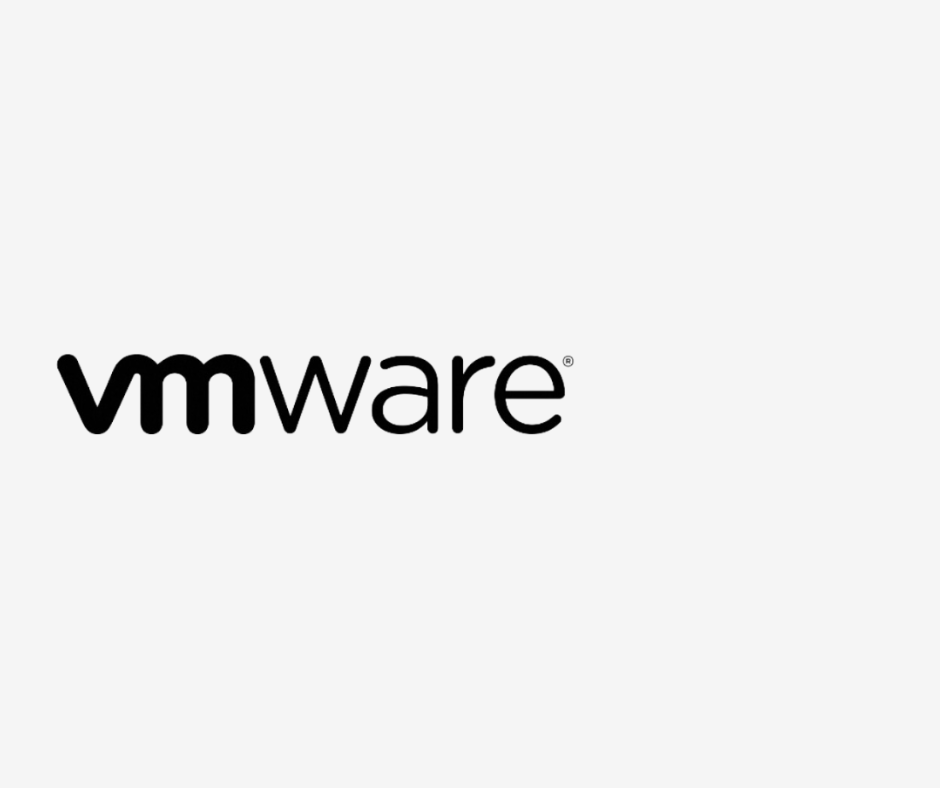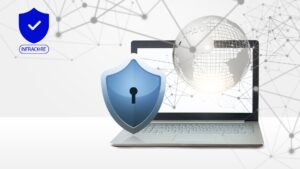Tech Titan: Your Guide to IT Troubleshooting Tips
At the core of advancing digital landscapes, contemporary businesses rely heavily on IT support to navigate the complexities of technological evolution.
This article explores the importance of elevating IT support to meet the demands of modernization, offering invaluable IT troubleshooting tips for organizations on the brink of digital transformation.
Setting the Stage: The Importance of Modern IT Support
In an era where technological stagnation equals organizational regression, modern IT support emerges not just as a facilitator but as an indispensable strategic lever.
Beyond rudimentary issue resolution, it becomes the fulcrum upon which businesses pivot towards innovation and operational excellence, positioning itself as the linchpin for sustained competitiveness.
A Glimpse into the Evolution of IT Support
To truly appreciate the urgency of forsaking archaic IT support paradigms, take a retrospective gaze into its evolution. IT troubleshooting tips can offer valuable insights into this transition.
Evolving from a reactive troubleshooter to a proactive catalyst for transformative change, the journey of IT support unfolds as a testament to adaptability. Businesses are impelled to align with this evolution, surging ahead as trailblazers in the digital panorama.
Assessing Your Existing IT Support Framework
Embarking on modernization necessitates a meticulous deconstruction of the existing IT support framework. Scrutinize processes, evaluate infrastructure sinews, and discern the pulse of responsiveness within the support team in this evaluative quest.
Recognizing Signs of Outdated Systems and Practices
Outdated IT systems manifest as a shadowy specter, seen in sluggish performance and disruptive downtimes.
Recognition of these insidious signs becomes the clarion call for revitalizing the core of IT infrastructure.
Impact on Productivity and Efficiency
Outdated IT support isn’t just an operational hiccup; it’s a leech on productivity. Every moment lost to technical aberrations translates into tangible erosions in operational efficacy.
Security Risks Associated with Legacy Systems
In an era where cyber threats are as dynamic as the technology they exploit, clinging to legacy systems becomes a perilous gambit. The vulnerability of outdated IT support metamorphoses into a tangible risk, inviting potential breaches and compromising organizational data sanctity. Implementing effective IT troubleshooting tips is crucial to mitigate these risks and safeguard the integrity of organizational systems against evolving cyber threats.
Technological Advancements in IT Support
Modern IT support isn’t a mere collection of tools; it’s an amalgamation of cutting-edge technologies.
The adoption of automation, artificial intelligence, and predictive analytics emerges not as a choice but as a strategic imperative for asserting dominance in the ever-evolving IT spectrum.
Aligning IT Support with Business Goals
Transcending the traditional role of a support mechanism, IT support becomes a symbiotic partner in achieving broader business objectives. The synergy between technological facilitation and organizational goals becomes the lodestar for contemporary businesses.
Hardware and Software Obsolescence
Obsolete hardware and software ensnare operational efficiency. Regular audits surface as discerning eyes that identify and excise these outdated components, paving the way for a technological renaissance.
Lack of Scalability and Flexibility
In an era where business landscapes shift like sand dunes, the inflexibility of IT systems becomes a chokehold on growth. Scalability isn’t a mere feature but an emblem of modern IT support, accommodating the dynamic needs of a burgeoning business. Implementing effective IT troubleshooting tips is essential to ensure that IT systems remain agile and responsive to the evolving demands of a changing business environment.
Adapting to New Threat Landscapes
The evolution of cyber threats requires a commensurate evolution in cybersecurity measures. Modern IT support becomes a fortress, adapting to new threat landscapes with agility born from vigilance and technological sophistication.
Importance of Regular Security Audits
In an era where business landscapes shift like sand dunes, the inflexibility of IT systems becomes a chokehold on growth. Scalability isn’t a mere feature but an emblem of modern IT support, accommodating the dynamic needs of a burgeoning business. Implementing effective IT troubleshooting tips is essential to ensure that IT systems remain agile and responsive to the evolving demands of a changing business environment. Modernizing IT Infrastructure
Cloud Solutions for Enhanced Accessibility
The migration to cloud computing isn’t a mere transition; it’s a seismic shift towards enhanced accessibility and scalability.
The adoption of cloud solutions redefines the contours of IT efficiency, marking a transformative leap into the digital expanse.
The Integration of Artificial Intelligence
Artificial intelligence ceases to be a speculative construct; it becomes the warp and weft of modern IT support. From predictive issue resolution to data analytics, the integration of AI elevates support systems to unprecedented levels of acumen.

Transitioning to 24/7 Support - IT troubleshooting tips
The globalized nature of contemporary businesses demands a departure from conventional support hours. The transition to a 24/7 help desk is not a mere service enhancement; it’s a commitment to unwavering support, irrespective of temporal boundaries.
Incorporating effective IT troubleshooting tips ensures that round-the-clock IT support remains efficient and responsive to address any technical issues promptly, supporting businesses seamlessly across different time zones.
Implementing Proactive Issue Resolution Strategies
The paradigm shift in IT support extends beyond temporal dimensions; it becomes a philosophical recalibration.
Proactivity becomes the cornerstone, minimizing downtime, maximizing user satisfaction, and transcending the traditional reactive role of IT assistance.
Bridging the Knowledge Gap
The march of technology is relentless, and the workforce must stride in tandem. Investment in employee training isn’t a mere expense; it’s an architectural bridge, spanning the knowledge gap and ensuring that the workforce traverses the ever-expanding landscape of technological prowess.
Promoting a Tech-Savvy Culture
A culture that venerates technology as an enabler is a crucible for innovation. The promotion of a tech-savvy environment is not an HR initiative; it’s a strategic ethos that percolates through the organizational fabric, elevating the business to the echelons of digital adeptness.
Incorporating practical IT troubleshooting tips into this environment empowers employees to address technical challenges efficiently, fostering a proactive approach to technology and innovation within the organization.
Investing in Up-to-Date IT Support
The financial calculus of modern IT support transcends the boundaries of mere expenditure; it unfurls as a strategic investment.
The initial costs pale in comparison to the long-term dividends reaped through heightened productivity, reduced downtime, and augmented cybersecurity.
Calculating the Long-Term Savings
The meticulous calculation of long-term savings isn’t a rote financial exercise; it’s a narrative that articulates the saga of reduced downtime, increased productivity, and fortified cybersecurity. It’s a testament to the fiscal prudence inherent in the choice of modern IT support.
Evaluating Service Providers
In the labyrinth of service providers, choosing the right IT support partner is a strategic maneuver. Scrutiny of track records, assessment of expertise, and compatibility with the unique contours of business needs become the compass points in navigating this crucial decision.
Tailoring Support Solutions to Your Business Needs
The diversity among businesses necessitates moving away from a one-size-fits-all approach.
Customizing support solutions becomes paramount when choosing an IT support partner capable of syncing with the unique rhythm of organizational needs. Incorporating IT troubleshooting tips enhances this partnership, ensuring smoother resolution of technical issues

Phased Implementation for Minimal Disruption
The transition to modern IT support isn’t a sprint; it’s a carefully choreographed ballet. Phased implementation emerges as the choreography, ensuring minimal disruption and affording both technology and personnel the luxury of adapting gradually.
Embracing essential IT troubleshooting tips during this transition can streamline the process, allowing for efficient problem-solving and troubleshooting as systems evolve, ensuring a smooth and successful modernization of IT support services.
Communicating Changes Effectively to Stakeholders
Communication isn’t merely an administrative gesture; it’s the lifeblood of a successful transition.
Transparently articulating the reasons for change and elucidating how it augurs well for the organization is a narrative that resonates with stakeholders, fostering collective understanding and acceptance.
Real-World Examples of Transformation
The annals of successful business transformations provide rich tapestries of inspiration. These case studies are not mere chronicles of triumphs; they are living textbooks, replete with insights into challenges faced, strategies employed, and outcomes achieved.
Learning from the Experiences of Others
The collective wisdom gleaned from the experiences of others becomes a beacon, illuminating the path of modernization.
It’s not merely about learning; it’s about imbibing the ethos of innovation and resilience that emanates from the crucible of transformative journeys. Incorporating practical IT troubleshooting tips derived from shared experiences can fortify the journey towards modernization, equipping organizations with valuable insights to navigate and overcome technical challenges effectively.
Key Performance Indicators for Modernized IT Support
Success in modernized IT support isn’t an abstraction; it’s quantifiable through key performance indicators.
Metrics such as reduced downtime, increased productivity, and enhanced cybersecurity become the litmus tests, affirming the efficacy of the transition. Implementing effective IT troubleshooting tips plays a pivotal role in achieving and maintaining these performance indicators, ensuring that technical issues are swiftly addressed and resolved to uphold the efficiency and security of modern IT support systems.
Gathering Feedback and Making Continuous Improvements
Feedback isn’t static; it’s a dynamic tool for refinement. Regularly gathering insights from users and stakeholders becomes a ritual, a continual process of fine-tuning the IT support strategy, ensuring it remains adaptive, effective, and aligned with evolving organizational needs.
Anticipating Future Technological Trends
In a landscape where technological sands shift incessantly, the act of future-proofing becomes a strategic imperative. Anticipating future technological trends is not just about readiness; it’s about positioning IT support as a proactive force, ready to embrace innovations that sculpt the future business terrain.
Integrating effective IT troubleshooting tips into this proactive stance ensures that IT support remains agile and adaptable to address emerging technological challenges, safeguarding businesses against future disruptions and positioning them at the forefront of innovation.
Building Flexibility into Your IT Strategy
A rigid IT strategy is anachronistic. Building flexibility into the IT strategy ensures resilience against the caprices of technological evolution. It’s an architectural design that weaves adaptability into the very fabric of IT support.
Conclusion
Embracing Change: A Modern IT Support Paradigm
In conclusion, the metamorphosis towards modern IT support isn’t merely a procedural shift; it’s an ideological transformation. It’s the embrace of change as not just a constant but as a dynamic force propelling the organization toward sustained relevance in an ever-evolving technological panorama.
Steps for a Seamless Transition
As organizations embark on this transformative journey, the enumerated steps serve not as mere guideposts but as the very essence of a seamless transition. Modern IT support isn’t a service; it’s an orchestrator of business growth, innovation, and enduring success.
IT Troubleshooting Tips
Navigating the labyrinth of technical glitches requires finesse. Learn invaluable tips for troubleshooting IT issues efficiently, ensuring seamless operations.
Cost-Effective IT Support Solutions
Delve into a realm where cost meets efficiency. Uncover innovative and budget-friendly IT support solutions tailored for organizational success.
Comprehensive IT Assistance Packages
Explore bespoke IT assistance packages that transcend the conventional, offering a comprehensive suite of services to propel your business into the echelons of digital prowess.
IT Troubleshooting Tips FAQ
Begin by checking the status of the network hardware, including routers, switches, and firewalls. Verify that all cables are properly connected and that the equipment is powered on. Next, check for any outages reported by the Internet Service Provider (ISP). If the issue persists, use network diagnostic tools to identify potential bottlenecks or failures within the internal network. Additionally, ensure that any recent changes to network configurations are reviewed, as these could be the cause of the outage.
First, confirm that the shared drive server is online and that there are no network issues affecting connectivity. Check the user permissions to ensure that employees have the necessary access rights to the shared folders. If the shared drive is hosted on a network-attached storage (NAS) device, verify its health and status. Additionally, check for any recent updates or changes to the server or network that might have affected access.
Begin by checking the bandwidth usage to identify any applications or devices that might be consuming excessive bandwidth. Use network monitoring tools to pinpoint any network congestion or traffic spikes. Ensure that the network is properly segmented to prioritize critical business applications. Additionally, check for any external factors, such as ISP throttling or outages, that might be affecting internet speed. Implement Quality of Service (QoS) settings to manage bandwidth more effectively.
Start by confirming that the remote access server is online and that there are no network issues affecting connectivity. Verify that the user credentials are correct and that they have the necessary permissions for remote access. Check the configuration of the remote access solution, including any VPN settings, firewall rules, and security policies. Review any recent changes to the remote access infrastructure that might have introduced issues. Ensure that remote devices meet the security requirements and are correctly configured for access.
Immediately isolate the affected systems to prevent the spread of any potential threats. Conduct a thorough investigation to identify the source of the security breach, using logs and security monitoring tools. Review and update the company’s security policies, ensuring that all software and systems are patched and up to date. Notify relevant stakeholders and, if necessary, external authorities about the breach. Implement additional security measures, such as multi-factor authentication (MFA) and enhanced monitoring, to prevent future incidents.


















